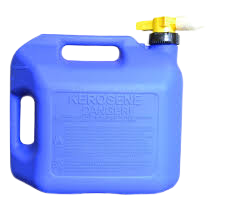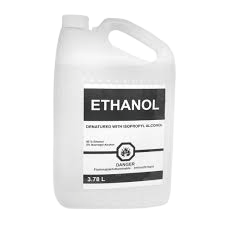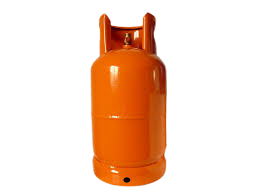Introduction
Here’s that post on fuel that I promised a while back. On a sidenote, when I was in third grade I accidently sort of burned down my backyard because a friend and I thought it was excellent idea to burn fish oil pills for fun. Don’t play with fire kids. Remember, only you can prevent forest fires. Anyways, I digress.
(Note: A previous draft of this post went into how efficient certain fuels were conpared to others, but then I realized that listing how many BTUs pine wood provides compared to hexamine fuel tablets ultimately means almost nothing ingame.)
Solid Fuel
Hurr durr, you guessed it, this is fuel that is solid. Usually people don’t use solid fuels because they’re efficient, but rather because they’re, for the most part, easier to store and transport.
Wood

Nothing special here. It’s just wood. Different types of wood usually have a variance in both burn time and temperature, however whether or not that’s a gameplay aspect is up to the community and development team.
Charcoal

Created by heating wood or similar combustible substances in the abcense of oxygen, which removes water and other subtances that could interfere with combustion. As a result, charcoal burns at a much higher temperature than unprocessed wood, allowing it to be used as a metallurgical fuel for blacksmithing and the refining of iron into steel.
In addition, charcoal can also be activated to absorb many toxins, can be used as a pigment, and is also a key ingredient in the making of blackpowder.
Peat

Formed naturally by the accumulation of organic material in suitable environments such as bogs and muskegs, peat is essentially compressed fuel and can burn comparably to wood once dried. Can also be pyrolized into charcoal.
Coal

A sedimentary rock that burns extremely well, once it ignites. Usually found in underground deposits, though rarely found on the surface as well. Like charcoal, it is also frequently used in the refining of steel. Coal can also be converted into both fuel gas and liquid fuel by way of gasification and hydrogenation.
Wax and Similar Substances

These are refined from a variety of sources, for example tallow is rendered beef fat while bayberry wax is scraped from the leaves of the bayberry shrub. The most common use of wax is in candles, however it also has waterproofing and sealing properties.
Fuel Tablets

Primarily composed of hexamine, these are extremely light and space-efficient, and can be used with extremely simple (even crude) stoves. However, the burning tablets are sensitive to wind and the heat cannot be easily adjusted.
Hexamine is also a vital ingredient in the production of the chemical explosive RDX, which itself is an ingredient in many explosive compositions such as C-4.
Liquid Fuels
Again, you know what liquid fuels. Among other purposes, these are the most common type of vehicle fuel.
Kerosene

Usually refined from crude oil, but can also be extracted from coal, though the latter process is somewhat less efficient. Used primarily in lanterns and as a vehicle fuel, though also used in less developed countries as stove or heater fuel.
Kerosene can also be added to diesel in small quantities to increase the freezing point of the mixture.
Gasoline

(This is what you Commonwealth blokes call petrol)
The most common fuel in internal combustion engines, gasoline is, like kerosene, a refinement of crude oil.
Diesel

Also a refinement of crude oil, diesel is much more stable than gasoline. Many alternative fuels can also be used in diesel engines, such as vegetable oils and synthetic diesel manufactured as a result of the Fischer-Tropsch process.
Alcohol

Because realism for the sake of realism is bad, and I’m sure nobody wants three different types of alcohol in-game (two of which can poison you), we are assuming the alcohol here is ethanol. Alcohol, apart from its obvious uses as a psychoactive substance and as a disinfectant, is also burned in stoves and can be added to gasoline to stretch supplies.
Gaseous Fuels
I bet you didn’t see this one coming. These are fuels that are gaseous. Who would’ve thought?
Propane

Increasingly popular in developing countries as a vehicle fuel. It is the primary fuel used in hot air balloons and blowtorches, and is also explosive.
Butane

Used as a lighter fuel and as fuel gas in camping stoves. Butane burns less efficiently at high altitudes and cold temperatures.
Syngas

Most often a result of gasification, syngas, or synthesis gas, can be used as a fuel gas either directly or can be converted into diesel.
Polling
- I would like to see different types of wood have different burning times and temp
- No, that’s realism for the sake of realism
- Null Option
0 voters
- I would like to see different types of liquid fuel (i.e. gasoline, kerosene, diesel
- Reeeealism for the sake of reeeealism!
- Null Option
0 voters
- I would like to see different types of fuel gas as described in the post
- That’s too much, just collectively call them fuel gas
- Null Option
0 voters
- I think gasification should be a thing
- I think gasification should be a thing, but fuel gas shouldn’t be able to be converted into liquid fuels
- I don’t think there should be gasification at all
- Null Option
0 voters
- I’m overall supportive of the ideas outlined in this suggestion
- I think there should be a lot of tweaking, but the overarching concept is something I’d like
- I don’t think this was a good suggestion at all
0 voters
- I feel like the visual aids help the reader get an mental image and helps get the point across better
- I don’t feel like the visual aids played a significant role in understanding the post
- Null Option
0 voters
Thank you for reading, and thank you for your time. It’s 11:40 PM EST and I’m absolutely dead on my feet because I was watching the HBO miniseries on Chernobyl, but hey, it do gotta be that way sometimes.
Again, thank you for your time, and good night.
 2 which are dangerous and one which gets you drunk.
2 which are dangerous and one which gets you drunk.